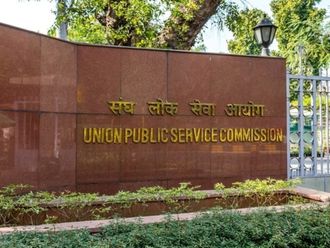On the eve of an important visit by United States President Barack Obama to the Gulf region last month, where he met with Arab Gulf leaders, the flagship magazine of the US foreign policy establishment, Foreign Affairs, published an article bumptiously titled ‘The United States Has No Gulf Allies’.
The author, Bilal Saab of the Atlantic Council, made the point that, “The word ‘ally’ is used far too casually in Washington’s Middle East lexicon. It’s time to break this bad habit, because the truth is that with the exception of Turkey — a Nato member — the United States does not share a single alliance with any Middle Eastern country. As the US-Gulf Cooperation COuncil (GCC) summit in Riyadh approaches, understanding what really constitutes an alliance couldn’t be more important.”
Saab acknowledged that a security partnership exists between a number of Middle Eastern countries and the US. But alliance, according to Saab, is a far cry from the current situation. Alliance, accordingly, is when a mutual defence pact is signed between two or more countries. Alliance is an elaborate treaty that “generally comes with permanent standing headquarters, diplomatic missions and a range of supporting infrastructure and processes”. Alliance is like Nato with article five, which avers “that an armed attack against one or more of them in Europe or North America shall be considered an attack against them all”. Such agreement is glaringly lacking between the US and Middle Eastern states.
History of Alliances:
The argument strikes one as, to paraphrase Isaiah Berlin, a very rare thing — a genuine sophistry. The argument is historically untrue, linguistically erroneous and analytically pointless. Second World War Allies, or the United Nations — US, Britain, France, USSR and others — had none of the criteria Saab claims that would make them allies. In fact, the pact that existed was the non-aggression pact between the USSR and Germany (The Molotov–Ribbentrop Pact), which Hitler decided to abrogate. No treaty or massive infrastructure had existed that bound them together. Farther, the GCC and the US have far more infrastructure than either the First World War or Second World War allies, which includes treaties, regular institutional linkages (GCC-US Strategic Cooperation Forum), permanent diplomatic ties, and military bases and facilities throughout the region.
What’s in a name? A rose is a rose:
What in the world does alliance mean? One can run the whole gamut of definitions but few examples will suffice: The Merriam-Webster Dictionary’s first definition of alliance is ‘a: the state of being allied; the action of allying and b: a bond or connection between families, states, parties, or individuals’. There is nothing about treaties or organisational infrastructure. The fourth definition is given as “a treaty of alliance”. But what does the word alliance denote for political scientists? In the context of American electoral politics, alignment and realignment “means the coming to power for several decades of a new coalition, replacing an old dominant coalition of the other party”. Nobody would claim American voters sign treaties or establish elaborate organisations. “Alliance” in Wikipedia is defined as not necessarily “requiring a formal military alliance… for being perceived as an ally — co-belligerence, fighting alongside someone, is enough. According to this usage, allies become so not when concluding an alliance treaty but when struck by war”.
For international relations theorists alliances don’t require treaties and all the trappings Saab claims. Perhaps the foremost student of international alliances, Stephen M. Walt, makes the point that “alliance (or alignment) is a formal (or informal) commitment for security cooperation between two or more states, intended to augment each member’s power, security, and/or influence.” In fact, alliances, according to the latter, shift as threat perceptions change.
A concept as a hindrance to understanding:
The distinction made between security partners and allies is a case of ignotum per ignotius, and a distinction without a difference and a hindrance to understanding. It does not advance our knowledge of alliance thus analytically fatuous. The truth of the matter is that the whole argument boils down to semantics.
Empirically, Saab’s argument does not hold much water: The US Government has a category of Major non-Nato ally (MNNA) which is “close allies who have strategic working relationships with US Armed Forces but are not members of the North Atlantic Treaty Organisation (Nato)”. Although it is not a mutual defence pact, “it does confer a variety of military and financial advantages that otherwise are not obtainable by non-Nato countries”. Those motley countries include a few Middle Eastern, Arab and Arabian Gulf states, Australia, Egypt, Israel, Japan, South Korea, Jordan, New Zealand, Argentina, Bahrain, Philippines, Thailand, Kuwait, Morocco, Pakistan, Afghanistan and Tunisia.
Timing and tidings:
The timing of the article, wittingly or unwittingly, tipped Obama’s hand, or was perhaps to force an issue on the US-GCC agenda. According to a Middle East Briefing (April 14, 2016), US Secretary of State John Kerry announced in Bahrain that the summit in Riyadh would start “the process of evaluating whether or not the concept of a GCC-Nato partnership in specific terms is something that would contribute significantly to the security and stability of the region”.
The US president was supposed to explain the new idea and Nato will discuss the new framework in its meeting in Warsaw in July. But always remember what Henry Kissinger once said: “To be an enemy of America can be dangerous, but to be a friend is fatal.”
Albadr SS Alshateri is a professor at National Defence College, Abu Dhabi.








